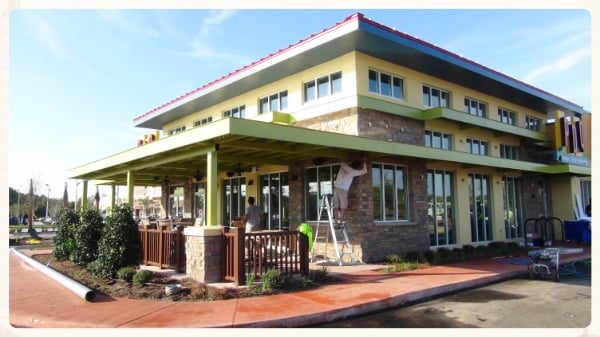
Too high and too low temperatures and relative humidity levels along with improperly prepared walls are the prime culprits responsible for paint failure in commercial painting. Usually, failure recognized immediately after the application of paint allows painters to find appropriate corrective measures, which can help keep costs down to a minimum. If failure is identified after the paint has dried out, the painter must remove the paint and even the substrate, which will increase the total cost of the project.
Although exterior paints will eventually fail due to weathering (humidity, temperature, and pressure variations), premature failure – a costly problem that occurs way too often – can be avoided by ensuring that the paint and work performed complies with the industry standards.
How to Ensure Quality in Commercial Painting
To determine the quality of paint and workmanship relating to paint applications, a commercial painting contractor should:
- Check the appropriate documentation – Since some manufacturers recommend certain application, curing, and drying techniques for their products, it’s very important to verify not only the industry standards, but also the manufacturer’s product and technical data sheets for the best results to be achieved.
- Monitor ambient conditions and surface temperature – Before mixing and applying the first coat of paint, you must ensure that the weather conditions conform to the specifications of the project. If a limited range of relative humidity, air temperature, and surface temperature tolerance is mentioned, the ambient conditions should be within the limits specified.
- Develop a quality control plan – Although commercial painting requirements and acceptance criteria are defined by industry standards, manufacturers’ data sheets, and the specifications of each project, developing a quality assurance plan allows you to conduct systematic inspections and identify defects at an earlier stage. This can help you prevent catastrophic failures. Your quality control plan must include a document that describes in detail all the things you need to check.
- Control paint mixing and application procedures – To get perfect results, you have to pay attention to the mixing and application procedures your workers use. Also, paint performance testing should be done every four hours or when ambient conditions change. Besides checking the mixing and application techniques, you must ensure that the type of thinner used along with the curing, drying, re-coating, and testing methods always comply with the instructions.
For instance, if the manufacturer recommends the coat of paint to be 4 mils thick in mild ambient weather conditions and 8 mils in severe environments, the painter must assess the ambient and determine whether it’s mild or severe. Then, he must calculate the optimal thickness of the paint according to specifications. Two more things you should bear in mind are: 1. excessive wind speed can dry the paint too fast, which may lead to shriveling and wrinkling; 2. mixing or applying paint under adverse weather conditions is usually considered a non-conformance and will void the manufacturer’s warranty.
- Test the end result – Always allow the paint to dry thoroughly before applying another coat of paint or the finishing coat. Pencil hardness, solvent resistance, and dry time testing (e.g. dry-to-touch, dry-to-handle, dry-to-re-coat, and dry-through) are just a few techniques you can use to check if the paint has cured and dried properly.

To ensure quality in commercial painting, another thing you have to do is to fix all flaws, treat problem areas, and make walls smooth before applying the first coat of paint. Most professional painters are familiar with the aforementioned points and use the best practices on all projects. The goal of great companies is to provide exceptional results every time.






